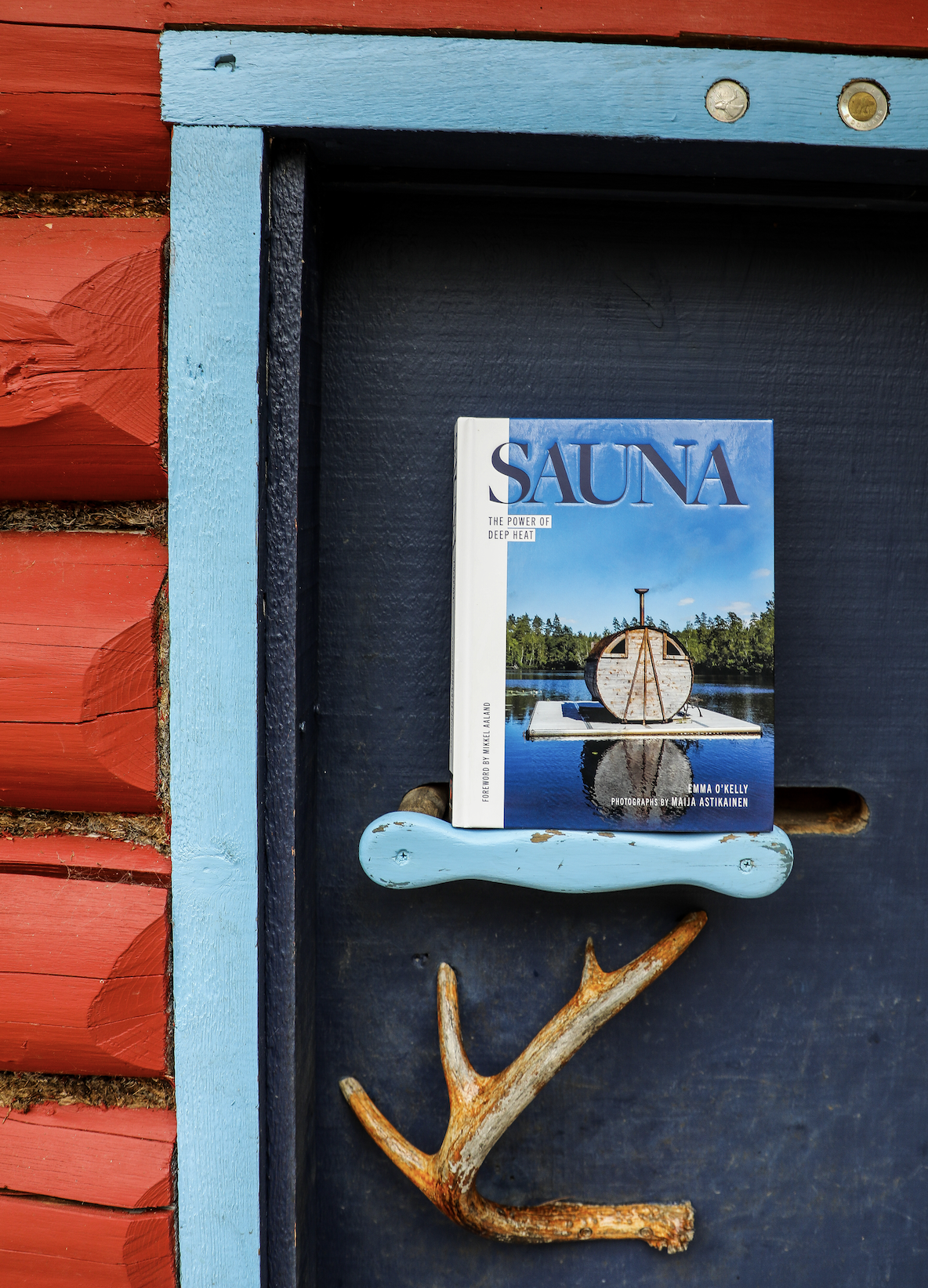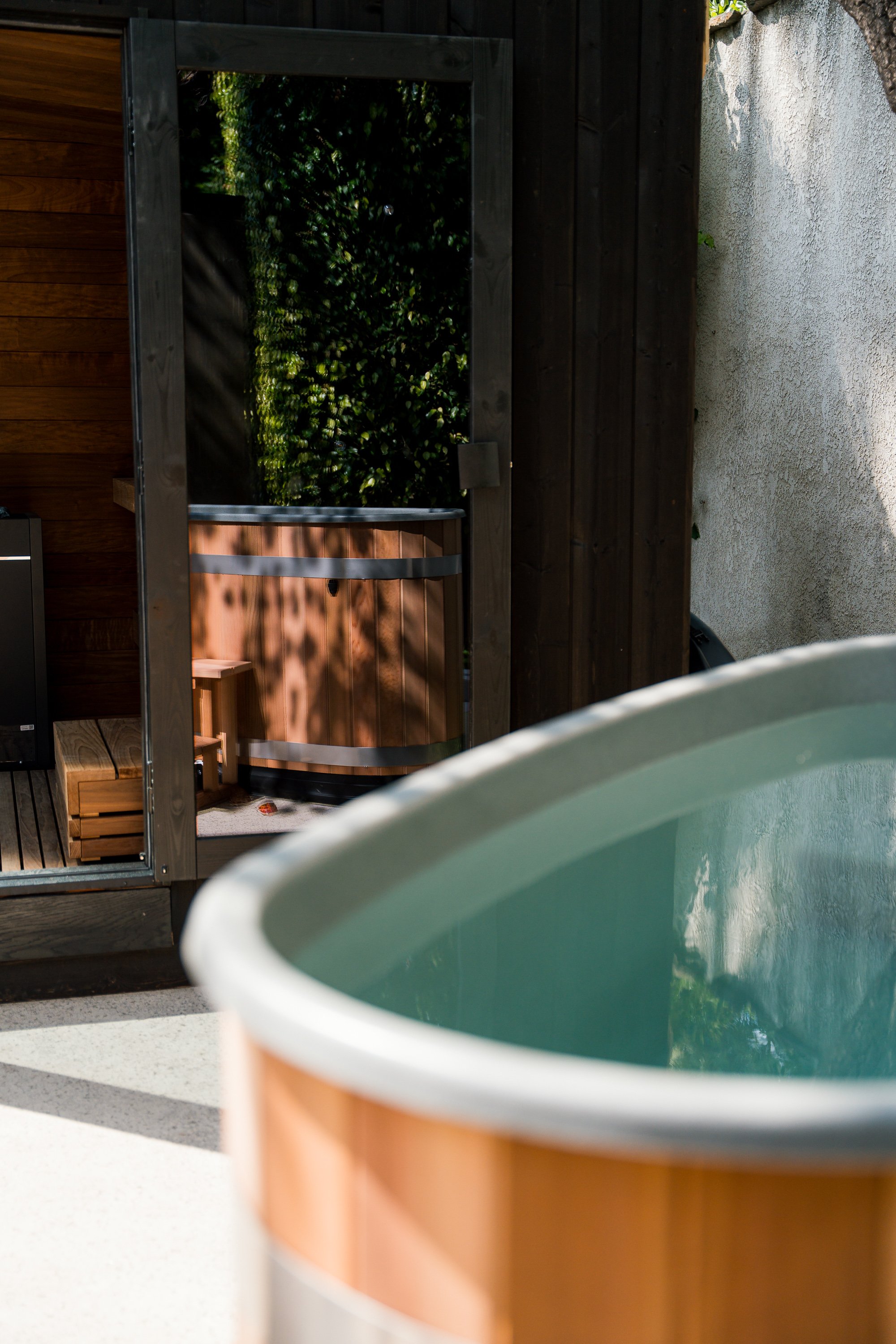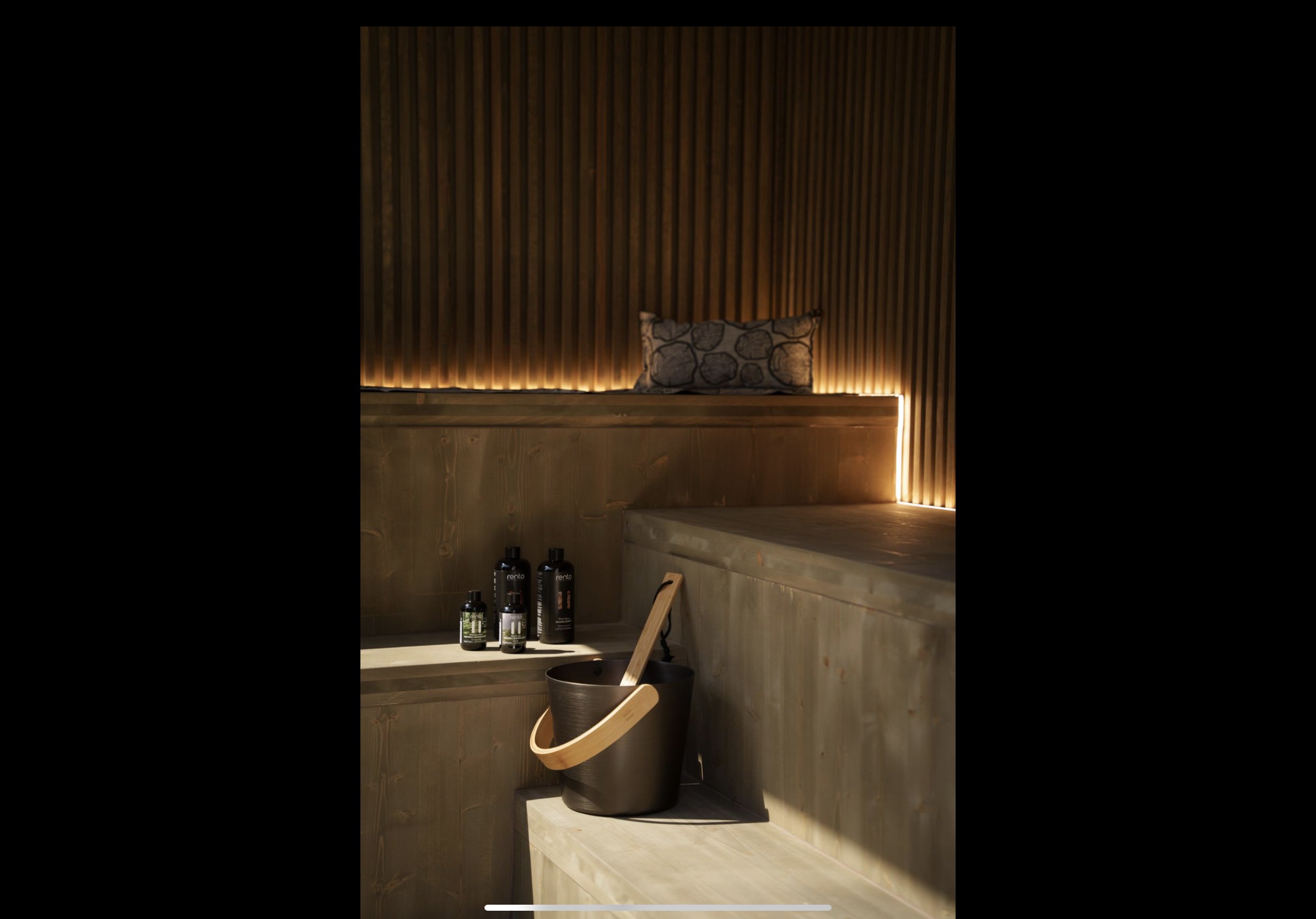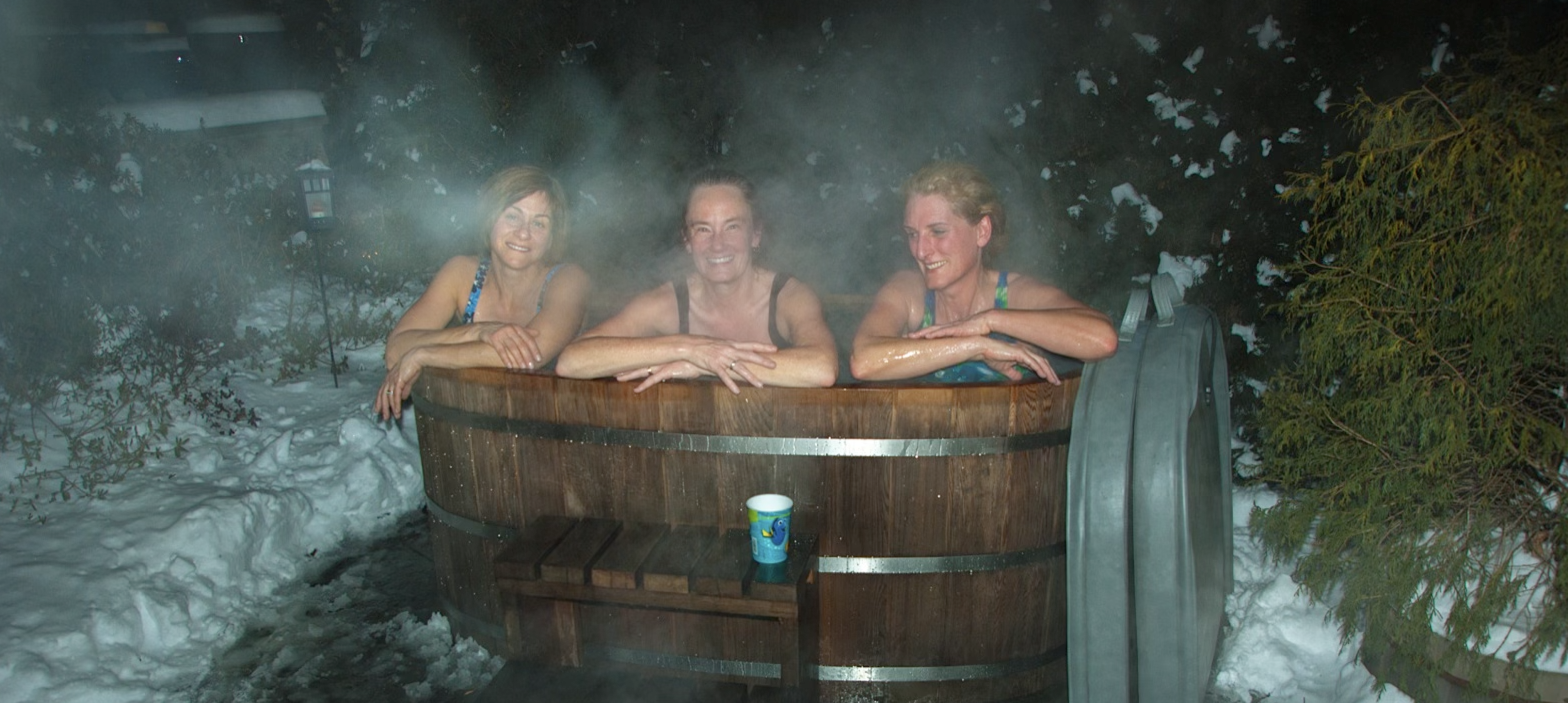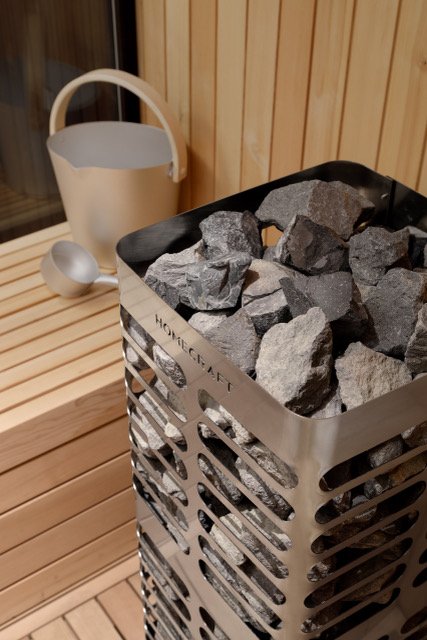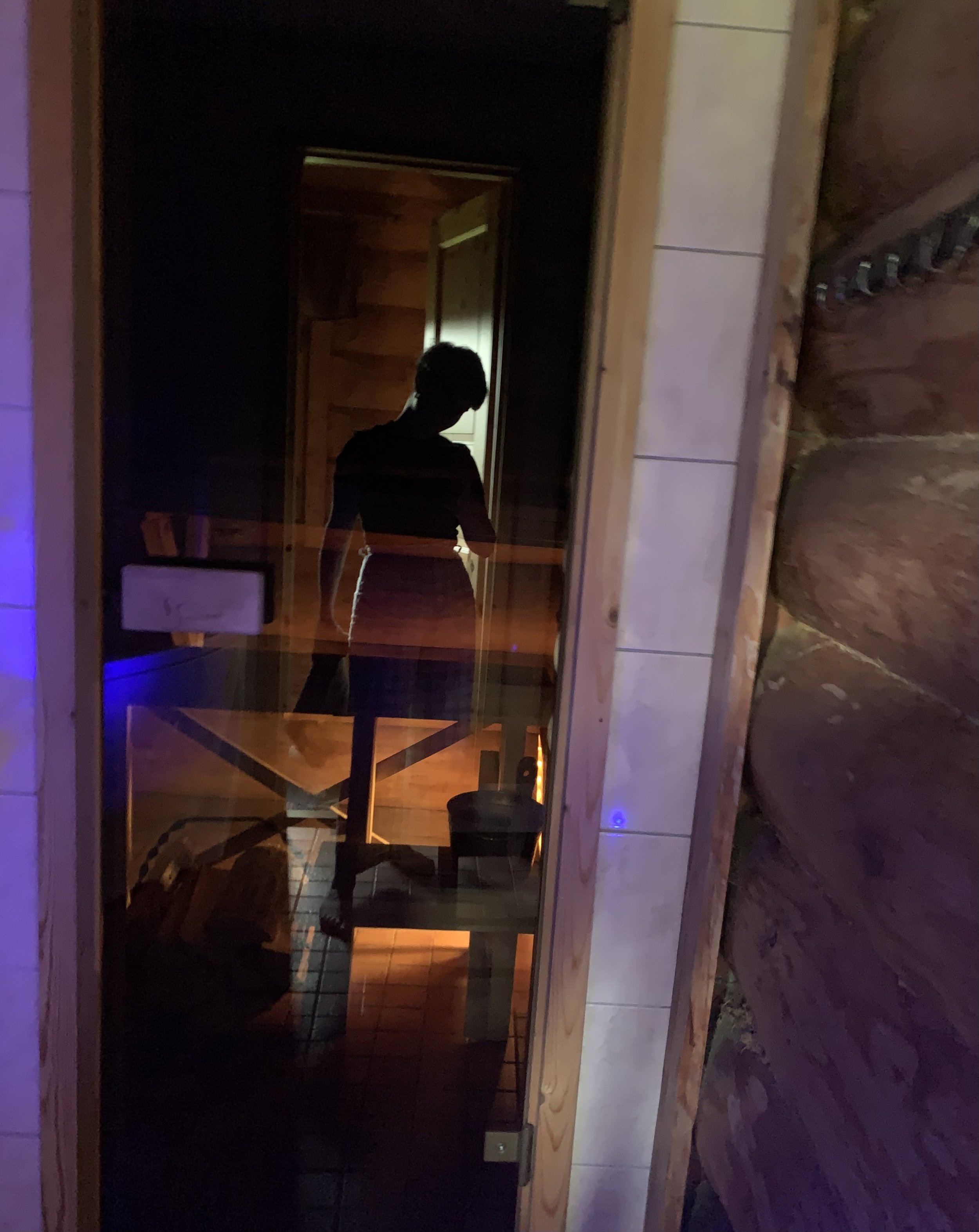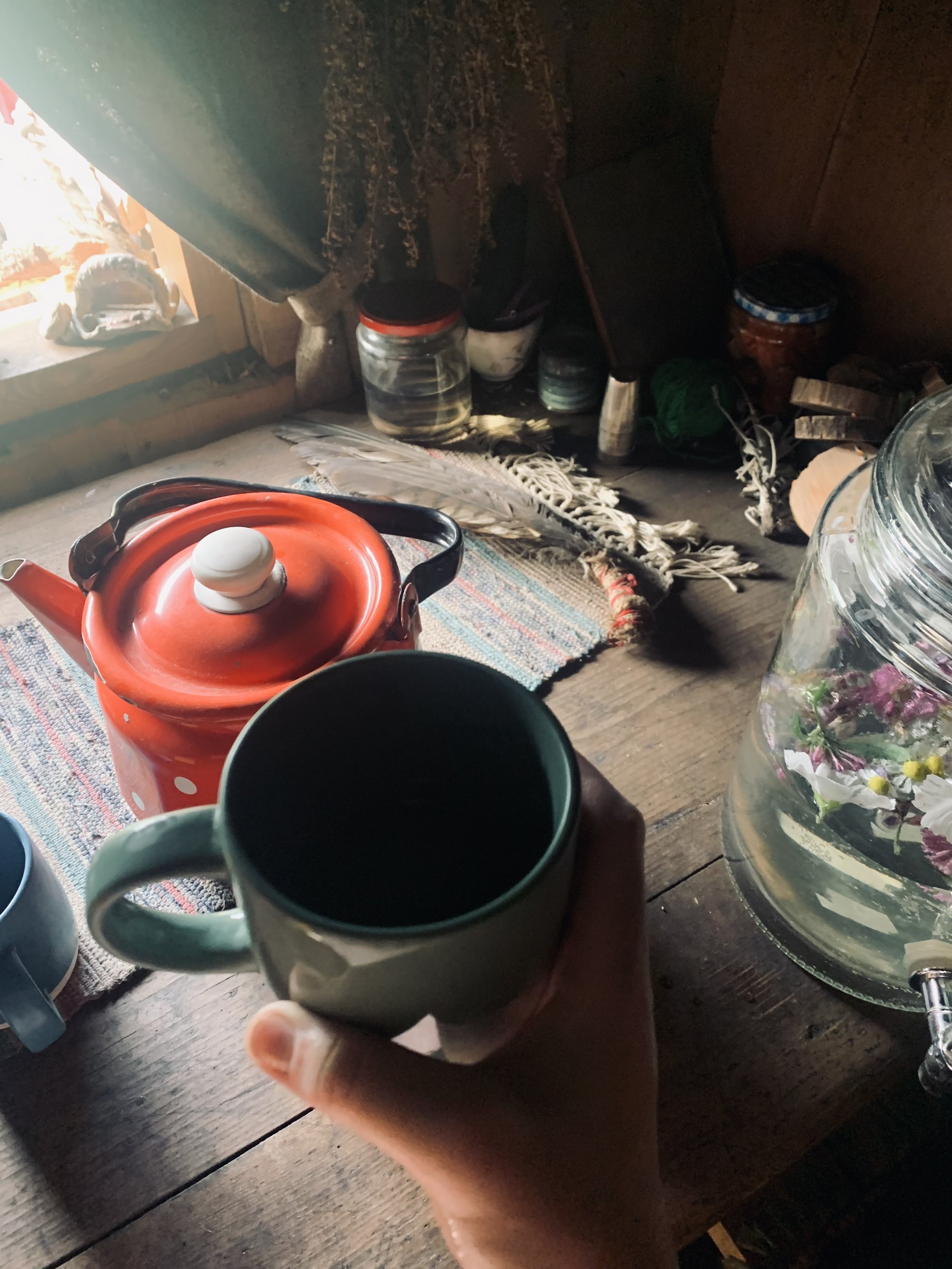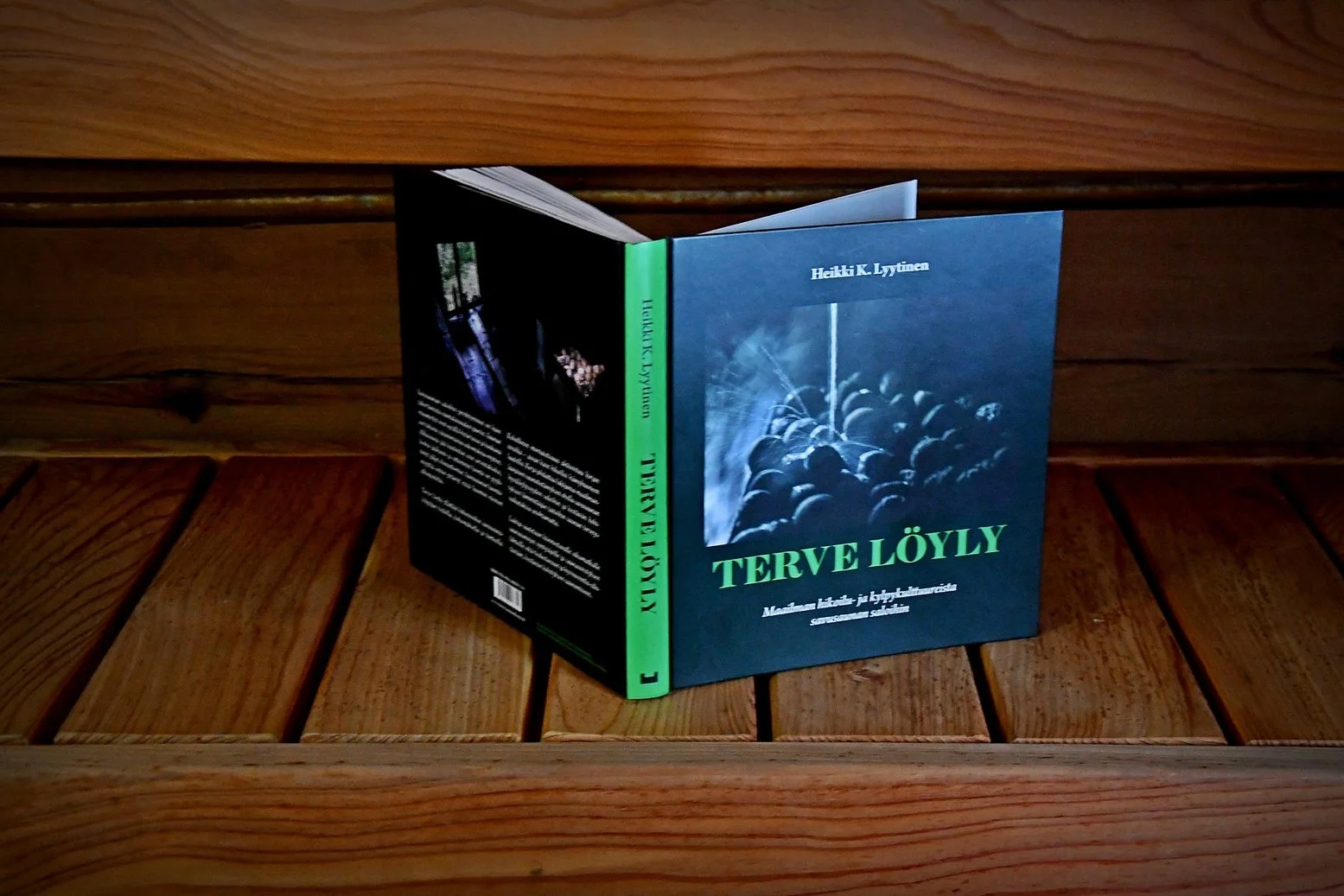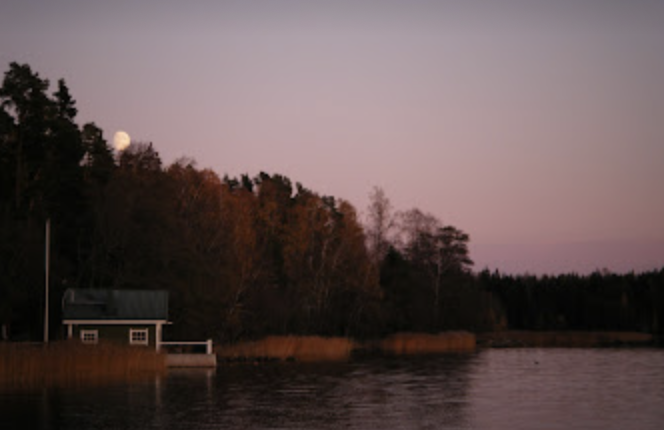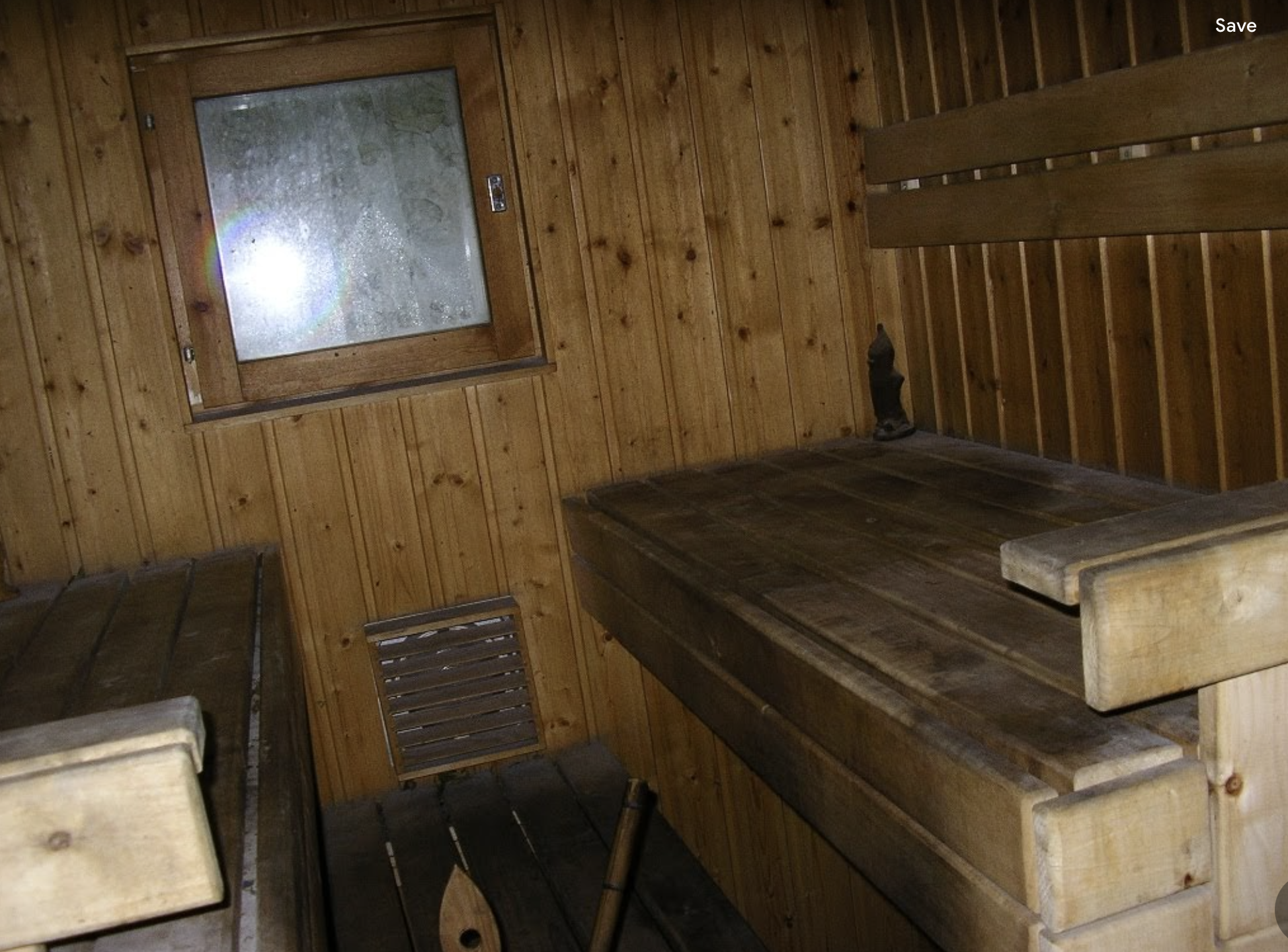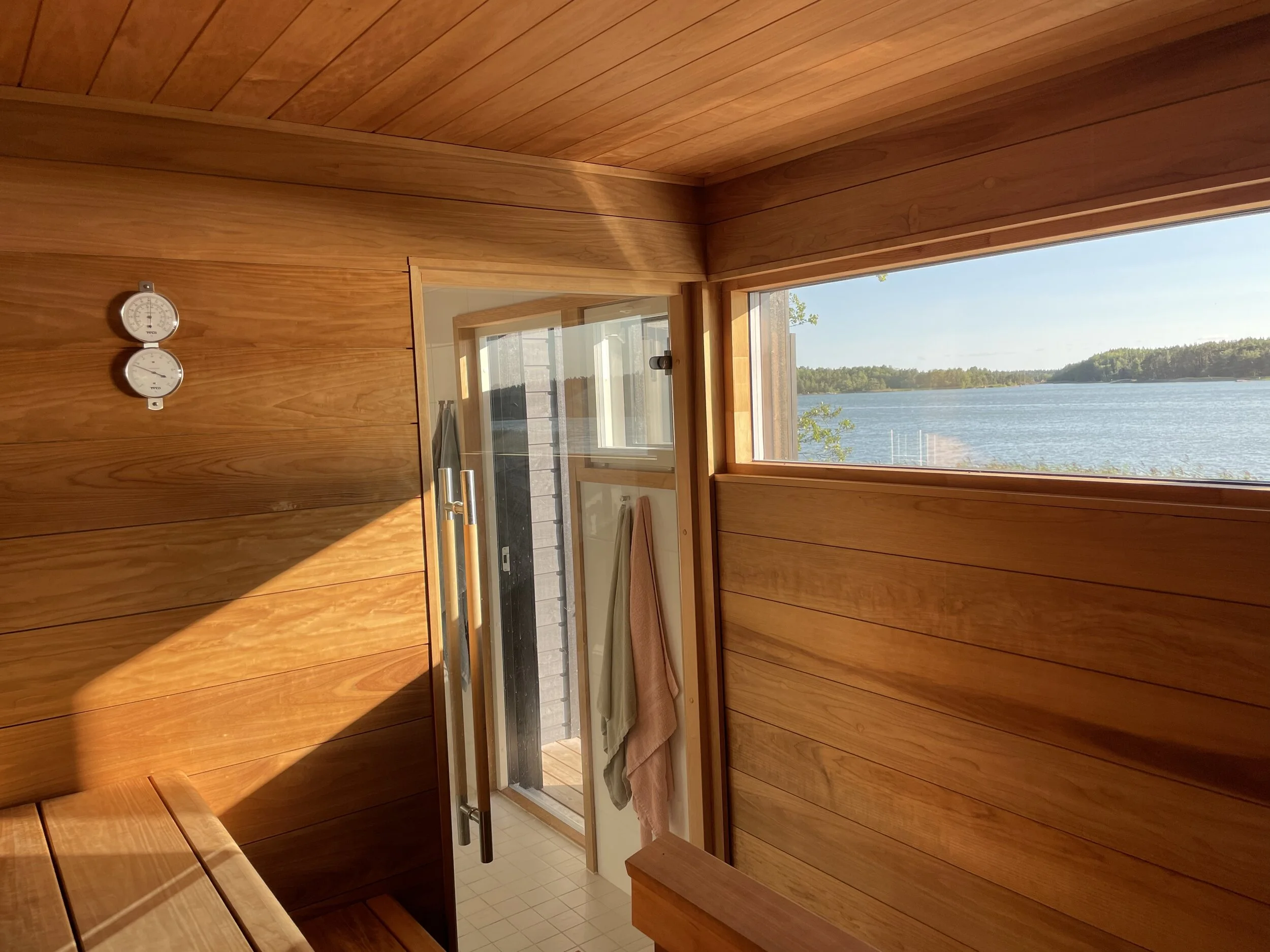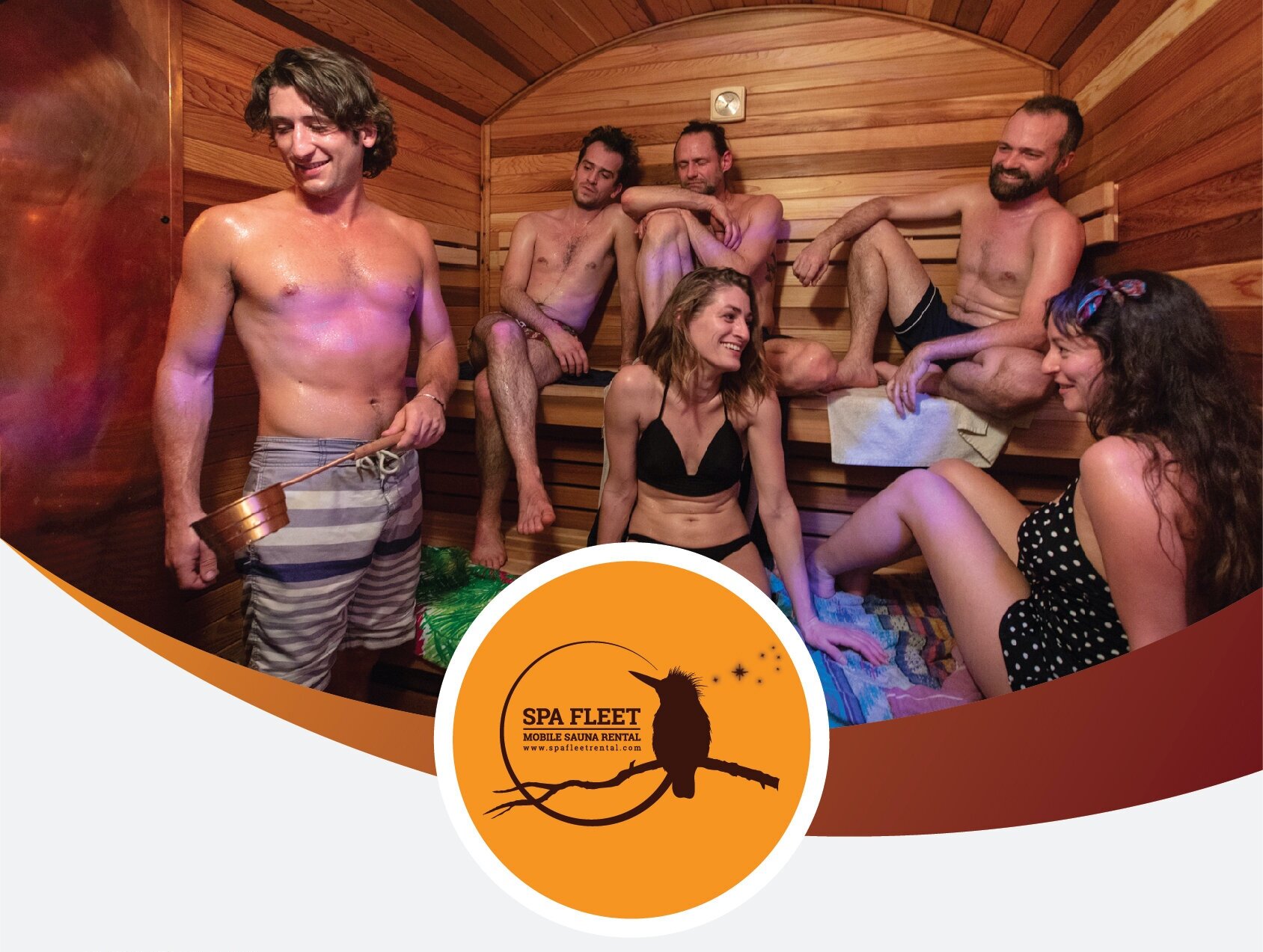Photo credit: KLAFS GmbH & Co
By Dr. Lasse Viinikka, medical doctor and former Chairman of the International Sauna Association and the Finnish Sauna Society
Copyright: Lasse Viinikka and Medical Health Library by Duodecim Publishing Ltd, terveyskirjasto.fi
(The original text is in Finnish and has been translated by the request of the North American Sauna Society by Eero Kilpi et al).
This article is informational in nature and is not a substitute for the professional medical judgment of treating physicians or other health care practitioners. This article is based on information available at the time and may not be updated with the most current information available at subsequent times. This article contains no warrant or guarantee, and the writer, publisher or the North American Sauna Society shall not be liable for any deficiencies in the information contained herein or for any inaccuracies or recommendations made by independent third parties from whom any of the information contained herein was obtained.
The original article, the translation of which the present article is, was written in Finnish for Finnish people, who are used to regular sauna baths from early childhood and thus know its effects well. Accordingly, all the conclusions or recommendations of the article may not be appropriate for persons, who have less experience with sauna. The orders and recommendations of local authorities should always override this article.
The conclusions of this article are the writers best attempt to summarize often scanty and contradictory scientific data. It is possible that another expert could have ended up with different conclusions from the same data.
Sauna’s Central Physiological Effects
Skin Temperature and Sweating
A Finnish sauna is the hottest place a person would enter voluntarily. Even inside the hot room, one’s body strives to maintain its normal temperature and greatly intensifies its heat exhaust system. A direct conclusion is big changes in one’s blood circulation system.
Skin heats up inside a sauna in just a couple of minutes to over 104º degrees Fahrenheit. At the same time, skin blood vessels dilate (vasodilation) and blood circulation increases. Signals of overall heat increase travel to the brain’s thermoregulation center (hypothalamus), which starts the process of removing the heat from the body. The autonomic nervous system starts the sweating process and blood vessels dilate further. Since one’s body surface is hotter than the inner body, increased blood circulation is not an effective way to exhaust the extra heat in a sauna.
Sweating is the most efficient way to exhaust excessive body heat. A Finnish style sauna is quite dry, so the sweat that has trickled to the skin’s surface vaporizes fast. Sweating quickly increases as the sauna bathing proceeds. At a latter part of a 15 minute sauna session, the heat extraction efficiency is 10 times more efficient than at the early minutes of the sauna session. At one traditional sauna visit (several sessions at the hot room), the amount of released sweat is 17 to 34 fluid ounces (0.5 to 1 liter).
Sweat salinity is only a third of the rest of the body’s fluid salinity, which means that pure water without extra salt is fine to drink at a sauna. When your body starts perspiring the skin temperature goes down a bit, but starts rising again if the sauna session is prolonged. A human body cannot retain stable body heat in the sauna; the temperature of the internal organs raise a bit, as well, for an adult a little over one degree Fahrenheit.
The core of sauna enjoyment is the feeling of warmth. This is conveyed through the skin’s heat receptors and increased by throwing water on the stove rocks (so called löyly). The temperature in the sauna doesn’t increase, rather the feeling of heat is created by the energy released by condensed steam. To convert 212ºF water to 212ºF steam takes five times the energy than heating 33ºF water to 212ºF. This is the amount of energy that is released when steam converts back to water on skin’s surface. It causes the hot, sometimes borderline painful, feeling. The droplets that surface on your skin soon after the “löyly” are not sweat, but the löyly steam that has condensed to water.
Changes in Blood Circulation
The dilation of the surface blood vessels cause considerable changes in one’s bloodstream. Inside a sauna, of the blood that is pumped by the heart about 50 to 70% goes to the surface vessels of the skin. In room temperature, this number is 5 to 10%. Abdomen and inner organ circulation comparatively diminishes.
The dilation of blood vessels diminishes blood’s flow resistance up to 40%, which eases the heart’s pumping task. Conversely, the heart rate increases, since it has to compensate for the blood pressure decrease caused by skin blood vessel dilatation. The need for increased pumping volume can be up to 75%.
The heart beat goes up in a sauna easily to over a hundred, with some, it can increase up to 150 bpm. The overall heart work load remains still quite low in comparison to the heart rate and is the equivalent of a brisk walk. Many people with mild heart conditions can therefore safely sauna bathe after consulting their doctors.
Sauna and Blood Pressure
Surface blood vessels will dilate in the sauna’s heat. It is shown by the reddened skin. The total volume of blood vessels increases, which would cause lowered blood pressure, if the heart did not increase its pumping power. During intensive sauna bathing, one’s heart rate can more than double.
Sauna’s effect on blood pressure has been researched extensively. Results are partially contradictory, but most often it has been stated that sauna bathing causes blood pressure to decrease. A certain consensus seems to be that sauna decreases one’s blood pressure on average by 10 mmHg, or a little less. At its longest, this influence has carried on up to 24 hours. In most studies blood pressure has turned back to its pre-sauna levels much faster.
Individual differences are, however, quite substantial. Some people experience slightly elevated blood pressure in the sauna, for some it stays the same, and with the rest, it goes down, usually moderately, but in some cases tens of mmHgs. Too low blood pressure can cause weakness, nausea and even fainting. Considerable individual differences in one’s blood pressure fluctuation may be one way to explain why some people enjoy the hot room so much longer, while others don’t.
Sauna and Hypertension Outbreak (High Blood Pressure Condition)
A Research group at the University of Eastern Finland found an interesting correlation between sauna and blood pressure. In an epidemiological study it was found out that among the middle-aged men who sauna bathed 4 to 7 times a week, a chance of hypertension outbreak during the 20-year follow up was only a tad over half, compared to the risk with a reference group who only sauna bathed once a week. This notion is completely new. Even if the found statistical connection doesn’t show the cause and effect, this finding is an important building block for future research.
Sauna and Treatment of High Blood Pressure
Sauna diminishes both normal and elevated blood pressure the same way. Hence, sauna has sometimes been promoted as a way to non-medically treat high blood pressure. You could naturally consider it as a part of the changes in one’s lifestyle when trying to lower one’s slightly elevated blood pressure, before the actual medical treatment takes place. Sauna, however, cannot be the principal form of treatment.
Those who take blood pressure medication, should be careful in a sauna. Beta blockers are commonly used to treat elevated blood pressure. They slow the acceleration of one’s heart beat, which may cause a detrimental drop in blood pressure. Preliminary considerations of the combined effects of blood pressure medication and sauna are hindered due to the fact that patients often take a mixture of different blood pressure medications at the same time. Combined outcome of taking multiple medications and experiencing heat is not well known. A high blood pressure patient who has started with new medication should be cautious at first while sauna bathing to find out how his/ her body reacts to heat and drug combinations. If a person has experienced symptoms of lowered blood pressure, it should be discussed with his/her physician once a renewed treatment plan is considered.
Blackout in a Sauna
Even if the body is used to sauna’s excessive heat, there are also some dangers. One of them is abrupt fainting. If ambulances are called to public/ commercial sauna establishments, this can be the reason. Very often the patient is already conscious when first responders reach the destination.
Mechanisms of Passing Out
Fainting is normally caused by a body position dependent drop in blood pressure and thus a lack of oxygen to the brain. Blood vessels dilate in the sauna heat and blood packs to the lower body more than normal. Upper body and particularly head oxygen intake diminishes. This phenomenon is highlighted when one stands up after lying down or sitting down.
Normally the brain’s blood vessels pressure receptors send a message of danger to other body organs. In consequence, lower body vessels contract and there is once again enough blood for the brain’s needs. But in case this mechanism is not working well enough, the brain does not get enough oxygen and one passes out.
Dehydration caused by sweating makes things worse, as do several medications, including many blood pressure medications. The common detriment is body position dependent blood pressure decline. This body position dependent blood pressure “sag” can also effect younger people, but as one gets older the phenomenon becomes more prevalent. About a third of the 70+ population suffers from it.
Treatment and Prevention of Blackouts
Fainting in general is not very dangerous. After lying down, the brain again receives adequate quantities of blood, and the sauna bather gains consciousness within minutes. The situation cannot, however, be taken lightly and the fallen person has to be monitored thoroughly. Fainting can be a result of a condition that in itself, requires instant treatment. Falling can cause cuts, welts, bruises, broken bones or, at its worst, brain damage.
Even an experienced sauna bather can be taken by surprise by unexpected fainting. Many have, however, warning signs before the incident. Tripping can be preceded by nausea, changes in one’s vision, dizziness, wiggly knees, or a feeling of being onboard of a ship going through waves. Most often the situation is at its worst a moment after leaving the hot room. If you experience these symptoms, sit down, or more preferably, lie down. If nothing else, go on the floor and don’t hesitate to ask for help.
There is no cure for the position dependent blood pressure drop. The only remedy for the sauna related excessive blood pressure sag is less sauna, in other words, less steam (löyly). If you can lie down on the bench with your feet up, that helps, but standing up from that position is more demanding than standing up from a sitting position and could make things worse soon after sauna.
During a long sauna session, one has to remember to hydrate during breaks from the hot room. With any new medication, and particularly with new blood pressure medication, one should use caution to find out how the new medication and heat together influence one’s body. It is essential to talk to your doctor particularly after sensing symptoms of lowered blood pressure.
Sauna and Heart Failure
Heart failure develops when, for example, a heart attack damaged, or high blood pressure weakened heart doesn’t have the strength to pump an adequate amount of blood to one’s body. Heart impairment is a set of symptoms, rather than a single sickness. Its signs are being short of breath, fatigue even from a minor physical stress, and lower limb swelling.
Because sauna bathing increases the heart’s workload, one would think it’s bad for a person with a heart condition. However, there is also a different angle to this. Because of the dilated blood vessels, blood’s flow resistance diminishes in sauna, which eases the heart’s task to deliver blood to different parts of the body.
The balance between various pros and cons of sauna bathing for a patient with a heart condition has been studied many times. These studies have given some indications that sauna would ease heart failure symptoms. Yet, the number of patients being studied have been so small that reliable conclusions have been difficult to find.
Remarkable new information was achieved recently when an international cooperation project gathered all methodologically similar studies together, so that due to similarities in their empirical research structures, their findings could be handled as one entity. This approach is called a meta-analysis. Meta-analysis based result findings are often considered substantial. There were originally 1,444 studies, out of which only 7 made it to the final analysis. They had altogether almost 500 patients, whose illnesses were medium severe. These patients were submitted to a 15 minute 140ºF heat, created by infrared radiation. After the heat, patients could rest for 30 minutes under warm blankets. This treatment was repeated five days a week for four weeks.
Heat worked suitably for these heart failure patients. Their hearts diminished in size, the volume of blood pumped with one heart beat increased and heart based salinity hormone content, which reacts sensitively to heart failure, decreased in the blood stream.
It is unfortunate that these types of combined analyses have not been conducted regarding a Finnish sauna. The body heat raises in the above mentioned heat exposure about the same as at our own, traditional sauna, so one could think that with certain caution, one could apply these findings to the traditional sauna, as well.
The mechanism of symptom alleviation is not well known. It is understood that sauna lowers blood pressure, repairs the functioning of the insides of blood vessels, so called endothelial cells and lessens the stiffness of vessel linings. All these occurrences might ease up the workload of a weary heart.
Even if sauna would seem to bring relief to a mid severe heart failure, people suffering of this condition should still be careful. Because it’s always a serious malady, its treatment is only carried out by consulting one’s physician, who also should consider the pros and cons of sauna bathing in general.
Sauna and Heart Attack
In 1976 Colonel Foster asked in a letter published in one of the world’s most highly regarded medical journals whether the high rate of deaths by heart attack in Finland could have had something to do with sauna bathing. His assumption was based on the fact that there were a lot of deaths by heart attack and very many saunas in Finland.
It is not known whether Foster was serious, but the Finns were. There were three studies conducted in a fast phase on the topic. Not one of them found even traces that sauna bathing would increase the risk of dying from a heart attack. As a matter of fact, it looked the other way round. When the time the Finns spent in a sauna was compared to the deaths, it became apparent that the likelihood of dying inside the sauna was smaller than the likelihood of dying outside the sauna. The explanation might be that a person who is seriously ill, shouldn’t go to sauna.
Olavi Luurila, on the other hand, showed on his doctoral dissertation in 1980 that heart attack patients can sauna bathe without consequences after the first, acute phase is over and recuperation has started. It is, however, important to point out that heart attacks are very serious conditions and recuperation has to take place under a physician’s supervision. You shouldn’t sauna bathe before consulting your doctor.
A completely new angle was found to heart attack and sauna in year 2015, when a research group in University of Eastern Finland, lead by Professor Jari Laukkanen, reported after a prolonged followup that sauna’s heavy users stayed alive longer than people, who sauna bathed less. Findings were recognized in international mainstream media better than any other sauna study before it. Interest was huge, probably the biggest of any other Finnish medical research findings ever.
The research group was 2,315 men, who had been recruited in the 1980’s to take part in a wide longitudinal study focusing on the risk factors involved with heart and coronary disease. Unlike in other studies, participants’ sauna habits had also been recorded. During the close to a 20-year follow up, those who sauna bathed four to seven times a week had 50% reduced risk of lethal heart failures, compared to those, who sauna bathed only once a week. This same deviation was found regardless of whether it was coronary artery disease deaths, which ever cardiovascular deaths, or what ever the cause of death was. Further adding the most common artery disease risk factors, and many other factors that could have shaken up the calculations, didn’t change the outcome.
A connection that was found in the epidemiological research, however, doesn’t explain the cause and effect, so further research is needed. Thus the research team has taken the task to research further the mechanisms that can cause the positive effects of sauna. Some very interesting possibilities have been found. Not only does sauna lower one’s blood pressure temporarily, but repeated sauna bathing is also associated with a diminished risk of hypertension. Sauna has also been found to increase the elasticity of artery walls.
The above mentioned data, provided by the volunteers, has also helped in finding many other connections with sauna and health. One worth mentioning is that frequent sauna bathing seems to be associated with a diminished risk of stroke.
Sauna and Cold
Common cold is the most prevalent human sickness. It is an airway inflammation caused by viruses, symptoms of which are a soar throat, fever, cough, and runny nose. Many sauna enthusiasts believe that sauna hardens one’s immune system and thus prevents a person from falling ill to a cold. But, what are the facts?
Sauna Bathing in Cold Prevention
The potential of sauna to diminish the chance of falling ill to a cold has been discussed widely, but researched less. There has been one more or less controlled study. 50 volunteers were divided to two equal sized groups, out of which the first sauna bathed once or twice a week for 6 months, the other group didn’t sauna bathe at all. Bouts of cold and sick days where calculated from both groups. For sauna bathers there were a little less than 30% fewer cold spells and a little over 30% fewer sick days of cold than for those, who avoided sauna. If the difference could have been indisputably proven to be caused by sauna bathing, the Finnish sauna bathing lifestyle would have been proven to be the best way to avoid colds; a massive medical news.
Unfortunately, there were some soft spots in the research arrangements. There were not many people in the research group. The reasoning behind how the two groups were established and manned was not told. A good research tradition expects the randomization in the division of study groups, which was not the case in the study. Furthermore, the subjects decided themselves when they were suspecting they were suffering from a cold and had to see a doctor to be diagnosed. There could have been a placebo effect such as that when the sauna bathers, themselves, believed the positive effects of sauna bathing, their threshold to suspect an upcoming cold could have been higher. The science community was left with waiting for new studies before making conclusions. This dry spell has lasted for 30 years now with no new studies, and as of this writing, there is no serious evidence that sauna bathing would diminish the risk of common cold.
People already suffering from a cold should avoid sauna, particularly if any fever is involved. A hot body does not need more heat and extra burden. The physical strain can increase risks of other maladies, such as virus based myocarditis (inflammation of the heart muscle).
False Assumptions about Sauna’s Effects on Respiratory Infections
Corona virus that started spreading in 2020 causes a respiratory infection at its mildest forms, but at its more severe forms a serious multi-organ disease. During the Covid-19 pandemic there has been viewpoints particularly on the internet that sauna could cure the illness. This is definitely not the case. Even if breathing hot air could have an effect on the bacteria and viruses in the mouth and throat, it will in no way dispose off microbes that are on the mucous membrane, or which have already found their way inside a cell. Further, there is no understanding of an immunological prevention mechanism stimulated by sauna heat that would kill the illness factors.
Moreover, even the claim that viruses causing respiratory infection would not take hold inside a sauna is not true. A hard sneeze can cause air to travel at speeds of 75 mph, at hurricane levels. At this speed the virus is still functional when it reaches the next sauna bather’s respiratory system, even at the sauna heat. Having said this, the risk of catching the virus in aerosol form or room surfaces in the hot room is perhaps relatively small.
Sauna and Fertility
Sperm is created best when testicle temperature is a couple of degrees below the traditional 98.6ºF. Hence, it is often asked whether the increased temperature also in testicles diminishes male’s chances of conceiving a baby. As a high interest topic, it has naturally also been studied. Often the researched group has consisted of about 10 men, who have been a tad over 20 years old.
Finnish medical students were taken to sauna for eight times within a two week test period. Sauna temperature was between 170ºF and 194ºF and the visits to the hot room were on average 15.3 minutes long, per cycle. It was found that there was a diminished amount of sperm a little over a month after the sauna bathing sessions, which would have indicated that heat would have harmed semen’s early development processes. The researcher, however, anticipated that the change was insignificant from fertility’s point of view.
In another Finnish study, a one-round 30 minute visit to sauna heated at 163º-185ºF didn’t have an impact in the quantity, mobility or construction of sperm. However, there is yet another research where only one sauna visit diminished the sperm quantity. A three month sauna bathing period, (twice a week for 15 minutes at 176º-194ºF) lowered the semen quantity to one third, and also caused disturbances in its mobility.
To interpret the above mentioned contradictory findings is not unequivocal, so let’s look at this question from a different angle. In Finland, in practice each and every fertile aged man sauna bathes. Men’s infertility issues are, still, not more prevalent in Finland than elsewhere, where there is no sauna bathing. A Turku-Kuopio (two Finnish University towns) based research team was researching thousands of semen samples in the 1980’s and found them of being high quality. Finnish sperm count was higher than had been found from other men abroad in decades. This would have hardly been the case if sauna would remarkably diminish sperm production. It should, however, be reminded that there are no data on the effect of sauna on men with established fertility problems. They may sometimes be advised to refrain from sauna.
There are no direct studies on sauna’s effect on female fertility. It does, however, increase prolactin production (milk hormone). High prolactin content is known to interfere with conception. A very heavy weeklong sauna treatment with an hour in the 176ºF hot sauna, twice a day, raised women’s prolactin content over fourfold and led to missed menstrual periods with five of the seven test persons. But the exposure to heat was so strong that one cannot draw conclusions of it in regards to the effects of traditional Finnish sauna bathing.
Sauna and Pregnancy
About 80-90% of women expecting a baby will sauna bathe all the way to giving birth in Finland. In an uncomplicated pregnancy no problems usually appear, but there are some factors that should be taken into account. If a pregnant woman has hypertension, or any other health problem, she must consult her physician before taking a sauna bath.
During pregnancy the mother’s heart beat increases, arteries’ flow resistance diminishes, surface blood circulation increases, and blood pressure goes down. Because sauna has similar effects on one’s body, a pregnant person can be sensitized to steam (löyly). It can start easily feeling too hot and also otherwise uncomfortable in a sauna. Best sauna experience can be reached by taking it easier, with less steam (löyly).
Sauna can also hasten the process of going into labor. At least one study stated that within the next 24 hours after sauna, giving birth occurred more than expected. Increased risk of miscarriage has not been linked to sauna bathing.
Sauna’s Effects on the Future Child
The fetus reacts also to the steam (löyly) the mother is taking. Fetus’s pulse goes up and her movement increases while mom is sauna bathing. Changes, however, stay within normal limits, so no damage is done. Healthy, pregnant women can do sauna without concerns and this way also the baby growing in the womb, get’s his/her first take on the Finnish tradition. As mentioned before, with women who suffer from hypertension while pregnant, the diminished blood circulation in placenta can turn even worse, so they definitely have to talk to their physicians before taking sauna.
With some mammals, the mother’s inner body temperature increase to 106º-108ºF can cause damages to the central nervous system of the young in the womb. This has naturally posed the question whether sauna could cause this to a human fetus, also. In a Finnish sauna you should not, however, get to the above mentioned temperatures. Suspicions have been raised in international medical literature at least on a couple of occasions.
Both times the debate started from a report stating that damaged babies’ mothers remembered they had sauna bathed during pregnancy. The fact that the findings were, statistically speaking, likely random occurrences, didn’t hinder the beat of the discussions. Finnish researchers have convincingly proved that sauna bathing does not damage the fetus. A hundred moms with babies with damages in their central nervous systems and a suitable comparison group with healthy babies’ moms, shared the exact same sauna habits. In both groups about 90% of the pregnant women sauna bathed. Also, the fact that occurrences of these central nervous system damages take place in Finland more rarely than in many other countries would speak against sauna being the cause of these damages at least in the Finnish population.
A respected research group released a finding about 15 years ago, where the father’s sauna bathing three months before pregnancy was involved with an increased risk of a brain tumor with the baby before the age of six. Even the researchers took the finding as surprising. The leading Finnish pediatric cancer researchers were suspicious about the outcome from the start. Even the original researchers called for more research on the topic, but there have been none published. Unless new data appear, these findings might end up in the sauna’s health research history as an interesting, but a meaningless notion. As of now, potential fathers shouldn’t avoid sauna for that reason.
A Child in a Sauna
Finnish kids are not born in a sauna anymore, but start sauna bathing early. On average first steams (löyly) are taken at the age of 4.5 months. 12% of babies make it to sauna before the age of 1 month, 70% before their first birthday and almost everyone, before they turn two years old. Once they get into the groove, kids sauna bathe the same as everyone else, normally at least once a week. According to a survey, 83% of Finnish kids enjoy sauna.
Effects of the Heat on a Child
Baby’s heat tolerance is lower than adult’s. Children’s skin surface/ body mass ratio is vast, body insulating body fat is thin, and body’s ability to sweat doesn’t reach its peak before teen age years. Furthermore, small kid’s blood circulation’s spare capacity is small. Even though baby’s pulse goes up in a sauna, the volume of the blood heart has pumped doesn’t increase in the same ratio, because the volume of one beat of blood decreases.
So, how hot a sauna can kids enjoy and at what age is sauna suitable for a baby? Even though there are no unambiguous answers to these questions, there are studies about small children’s sauna bathing from which to draw some conclusions.
When 2 to 15 year olds were taken to sauna for 10 minutes at 160ºF, their skin temperature raised by some five degrees and their body temperature, measured from rectum, by some 1.5 degrees. Their pulses increased by 50% and their breath rate almost the same. With the youngest, breath rate exceeded the need of oxygen intake and carbon dioxide disposal. In other words, they were also using their lungs to dispose excess heat. Some hormonal changes were found with children that can be found with adults only after much longer exposures to heat.
Drawing from the above, it can be said the children were at the very threshold of their ability to tolerate heat and with many, the threshold was crossed. Almost a third of the less than five year olds were complaining of nausea while in the hot room and almost as many after the sauna. Two out of twenty 5 to 10 year olds fainted and two were nauseous while recuperating. So, it would seem that 10 minutes in a 160ºF sauna is too much even for an experienced child.
Sauna Bathing on Children’s Terms
Because every child’s heat tolerance is personal, it’s difficult to give general temperature related instructions. When it comes to children, it is essential to hold on to the fact the child has to leave the hot room immediately when s/he starts to feel uncomfortable. A decent advice for parents, who are very familiar with sauna like in Finland, may be that a child can be taken into sauna when accompanying adult can, without any doubt, observe the child’s discomfort and be ready to react to it immediately, even if his/her own sauna pleasure would be compromised. A sensitive parent can take notice, even if the child couldn’t speak yet. Sauna bathing with a child goes on the child’s terms, and this is the way Finnish parents widely carry it out. An early start to sauna has not been noticed to cause harm for the child in Finland.
If a child wants to stay in the hot room longer, for example to stay there together with her parents, it is best to start taking the steam (löyly) from the lower bench. Smaller children shouldn’t be allowed to sauna bathe without adult supervision. When children sauna bathe together there is always a risk to that youngest are lured or forced to take too hot steams.
Because sauna is a strenuous heat shock for a child, a child with fever, or any other abrupt illness, should not be taken to sauna. A child can dehydrate a lot in a sauna, so one should be very careful if a child has diseases including vomiting or diarrhea. If a child has, say, a heart, or any other condition that limits exercising, one should consult a doctor about his/her sauna bathing.
Risk of an Accident
At least in Finland, sauna accidents are a greater health risk to a child than too much steam (löyly). Besides trips and falls, a small sauna bather is threatened by burns caused by hot water and the sauna stove.
Hot water can splash to child’s skin, or it can even be accidentally poured over a child. A child can of course herself push her hand to hot water, or pull a bucket of hot water left too close over herself.
The hotter the water is naturally the faster it will cause severe burns. For an adult. water at 140ºF will cause a deeper than superficial skin burn in about 5 seconds, but at 160ºF in less than a second. Kids skin is more sensitive. Hot water in the sauna should always be less than 140ºF for security concerns. A metal plated stove can easily cause a deep burn that goes through all skin layers. Burns can be prevented by safeguarding the stove so that a child cannot, by accident or curiosity, get a hold of it.
Every sauna goer has to learn to give first aid to burns, and particularly those with small children, so well that in an emergency one can automatically take the right actions.
The Relaxing Element of Sauna
“By whisking one’s anger fades, by sauna bathing one’s rage subsides” says an old Finnish poem. Even today sauna bathers agree that maybe the most important factor of sauna bathing is its relaxing influence. Two, three rounds to the hot room melt the stress away. How the good feeling mechanism takes place has been discussed a lot.
The Meaning of Endorphins
Endorphin production has often been stated as the reason for the great sauna related feeling. Endorphins are a group of substances that the human body produces, which act like morphine. They diminish anxiety and prevent pain. The name comes from the words endogenous (intrinsic, self produced) morphine. They are produced in the brain and the pea size pituitary gland set under the brain. Their effect also takes place in the brain.
There are a couple of studies about sauna and endorphins, mostly several decades old. Study approach has mostly been quite simple; it has been measured from the blood while sauna bathing and sometimes found that the endorphin levels have been slightly elevated, but not always. The meaning of endorphin levels in the blood is contradictory. This is due to the fact that between blood and brain tissue there is a “sieve”, which measures which matter is conveyed from the brain to blood and from the blood to brain. Endorphins are not given a free access through this, so called, Blood-Brain Barrier structure. The level of endorphins in the blood is therefore not necessarily a good indicator of endorphin's influence in the brain.
A better way to research this topic would be to give sauna bathers endorphin blockers and see whether the good feeling would not occur. With present day imaging technology, the endorphin effects in the brain could be studied directly. These technologies have not been applied to sauna bathing yet. Some support has been found for the idea that endorphins have an effect on the good feeling that follows a physical strain.
One can draw only limited conclusions from the results that have been gained from studying runners in order to understand the emerging mechanisms of sauna related relaxation better. Sauna and running cause partially similar and partially diverse physiological changes. In both cases pulse goes up and sweat surfaces. While sauna bathing, blood pressure goes down and skin’s surface blood circulation increases. In a physical strain blood pressure goes up and blood circulation in the muscles goes up. Only with a very severe oversimplification one could argue with the information at hand that the great feeling that sauna causes is caused due to endorphins.
Psychoanalytical Point of View
Three leading Finnish psychiatrists at the time in the 70s took a different approach. They examined the relaxing effects of sauna in a lengthy article from a psychoanalytic theory framework perspective. The conclusion was that the good feelings that sauna creates was based on the grown up mind’s temporary return to a child like way to think, experience, and feel and as an outcome from this, alleviated feelings of guilt. The article caused very critical discussion, but also praise.
It has not been found what causes the relaxing mechanism of the sauna. That is good. Mystical good feeling is more fulfilling, anyhow, than one that would be completely resolved.
Literature
Eisalo A, Luurila O. Sauna ja sydän. Duodecim 1988; 104: 622-624.Ernst E, Pecho E, Wirz P, Saradeth T. Sauna bathing and the incidence of Common Colds. Ann Med 1990; 22: 225-7.
Huhtaniemi IT, Laukkanen JA. Endocrine effects of sauna bath. Current Opinion in Endocrine and Metabolic Research 2020; 11: 15-20.
Hägglund H. Bastuboken. Heta fakta om bastu och hälsa. Ekerlids Förlag, Tukholma, 2020.
Jokinen E. Children's physiological adjustment to heat stress during Finnish Sauna Bath. Kirjapaino Pika Oy, Turku, 1989.
Källström M, Soveri I, Oldgren J, Laukkanen J, Ichiki T, Tei C, Timmermann M, Berglund L, Hägglund H. Effects of sauna bath on heart failure. Systematic review and meta-analysis. Clin. Cardiol. 2018; 41(11): 1491-501.
Laukkanen T, Khan H, Zaccardi F, Laukkanen J. Association between sauna bathing and fatal cardiovascular and all-cause mortality events. JAMA Intern Med 2015; 175(4): 542-8.
Laukkanen T, Laukkanen J. Sauna, keho & mieli. Docendo, Jyväskylä, 2020.
Luurila O. Arrhythmias and other cardiovascular responses during Finnish sauna and exercise testing in healthy men and post-myocardial infarction patients. Acta Med Scand 1980; Suppl. 641.
Saxen L. Sauna ja synnynnäiset epämuodostumat - myytti ja sen synty. Duodecim 1995;111(5):387-8.
Strandberg T, Hussi E, Kukkonen-Harjula K. Ylös, ulos, lenkille – ja saunaan. Suomen Lääkärilehti 2018; (73(24-31): 1571-6.
Tähkä V, Achte K. A., Rechardt E. Psykoanalyyttisia näkökohtia saunasta ja saunomisesta. Suomen Lääkärilehti 25 (1970) 1878-1888.
Vähä-Eskeli K. Sauna ja raskaus. Duodecim 1988;104(8):645-9.
Välimäki I, Jokinen E. Lasten lämmönsäätely ja nestetasapaino – lapsi saunassa. Sauna (1984) 2:4-9.




